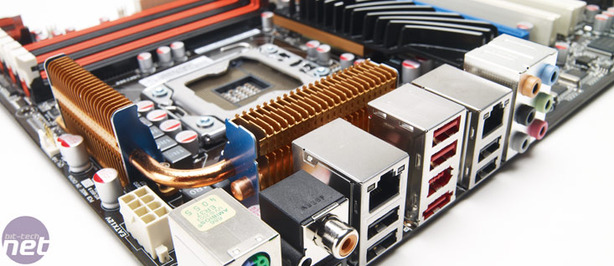Crysis
Publisher: Electronic ArtsWe tested the game using the 64-bit executable under and DirectX 10 with the 1.21 patch applied. We used a custom time demo recorded on the Harbour map which is more representative of gameplay than the built-in benchmark that renders things much faster than you're going to experience in game.
For our testing, we set all the settings to High. Because of how intense the game is, we tested with both anti-aliasing and anisotropic filtering disabled at resolutions above 1,680 x 1,050 for the time being. There is currently no support for anisotropic filtering in the game, but you can still force it from the driver control panel.
Results Analysis
As the P6TD Deluxe is an update to an update of our favourite LGA1366 board, we wanted to see some performance improvements. This is especially true as Asus claims that the new features will help with overclocking. Fortunately for all parties involved, we weren’t let down.At both stock and overclocked settings, the P6TD was consistently faster than the P6T V2 in all three of our 2D benchmarks. Although its victories were in general only achieved by a small margin, it’s good to see that the changes Asus has made to the board yielded positive results. At stock speeds, the P6TD was 27 and 12 points faster in the image editing and video encoding tests compared to the P6T V2 - a slim 1 per cent margin - but this rose to between 3 and 5 per cent when overclocked with the same settings. Gaming results were on a par with the older version, with the board scoring a minimum of 32fps and an average of 37fps in Crysis at 1,680 x 1,050 with 2x AA.
With a thumbs up in our out-of-the-box performance tests, it was time to get our hands dirty in the BIOS. The P6TD has the same excellent BIOS as Asus’ other high-end boards; it’s easy to navigate, and provides precise control over your hardware. The BIOS has voltages for all the essentials and then some, and they’re all shown in their complete values rather than incremental boosts. Asus’ excellent EZ Flash is present, which makes updating the BIOS as easy as mince pie (see p72), and you can save two overclocking profiles, too.
The first test to run the fancy new power phases through their paces was the maximum QPI test. The Asus P6T V2 would run a 215MHz QPI with the multiplier lowered to 12x and we were pleased to find that the P6TD Deluxe was happy to run a 220MHz maximum QPI under the same conditions. This may not seem the most exuberant of increases, but when you factor in the high multipliers of Core i7 CPUs, it’s a decent increase in overclocking potential.

That was some potential we intended to take full advantage of, too. Knowing that the previous board could overclock our Core i7-920 to 4GHz, we had to aim higher. In the end, we successfully benchmarked the P6TD at 4.2GHz, a result of a 21x multiplier and a 205MHz QPI. The overclock was made possible by using a 1.475V vcore and with 1.3V running through both the ICH and IOH (Southbridge and X58 chip). These are the same voltages that we used to get the Core i7-920 to 4GHz with the P6T V2, so it looks as though the extra power phases and 2oz copper layer does indeed deliver.
As you might imagine, we saw some hefty bumps to the scores in our Media Benchmarks. The multi-threaded video-encoding test is especially partial to a whopping overclock, and the score jumped to 3,319, an increase of 1,083 points from the stock speed. Image editing also went up considerably, from 1,214 to 1,734, a jump of 522 points and the highest score we’ve seen from a motherboard to date. With the CPU running at 4.2GHz, Crysis ran at a minimum of 33fps.

MSI MPG Velox 100R Chassis Review
October 14 2021 | 15:04










Want to comment? Please log in.